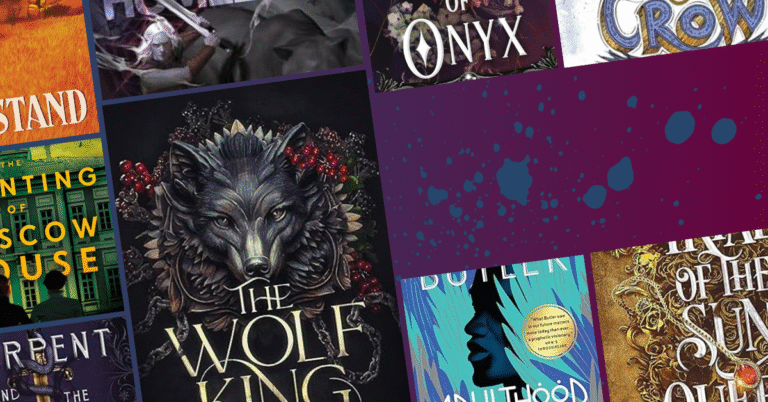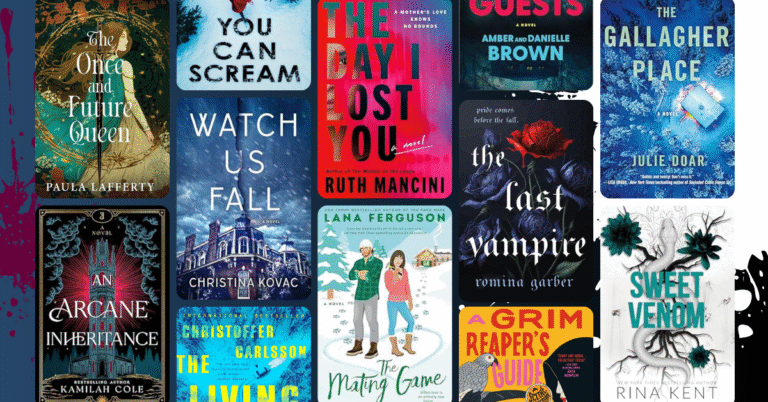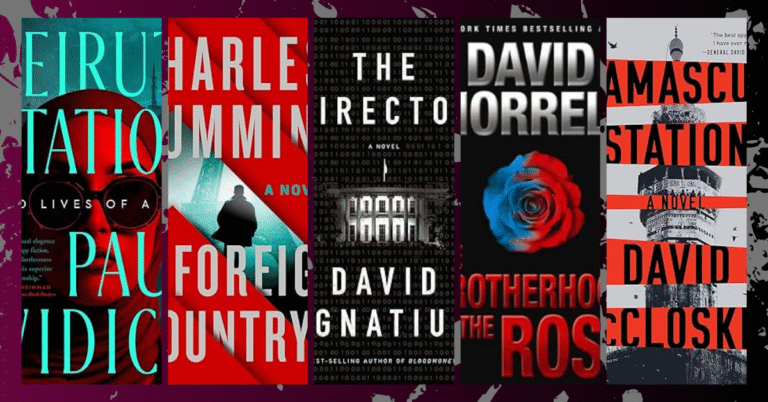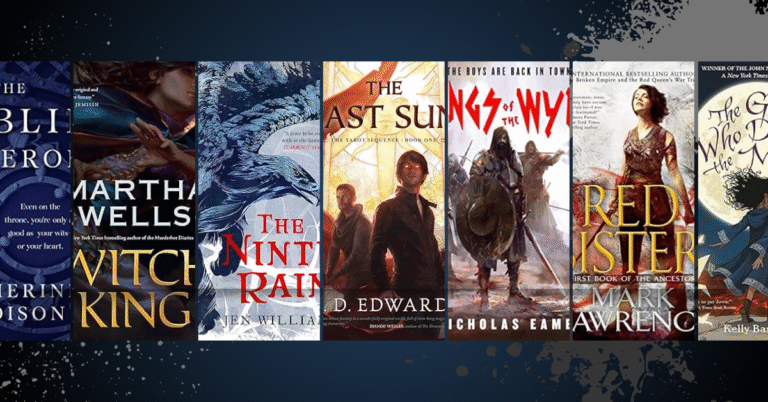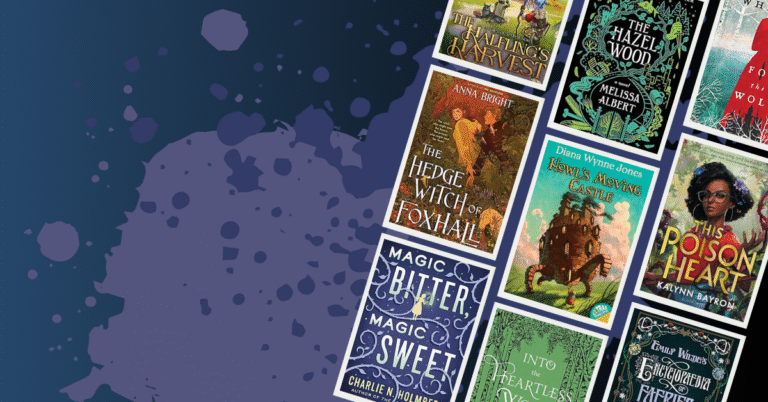From Cli-Fi to BookTok, today’s literary scene is less “quiet escape: and more “hold my coffee” while I buy five more books I saw online.
Remember when reading was considered a quiet, solitary escape? Oh, how times have changed. In a world where books trend like memes and social media algorithms decide what’s “must-read,” the literary scene is anything but predictable. Between climate change-themed epics and BookTok-driven sellouts, storytelling has never been louder—or more fun.
Forget the dusty classics and the same five tropes; today’s readers are craving everything from binge-worthy chapter drops to audiobooks that make dishwashing feel profound. And publishers? They’re scrambling to keep up with the shifting sands of what readers demand, from eco-conscious printing to genre mash-ups that make “romantasy” a thing.
So, grab your reusable cup and scroll-worthy TBR—we’re about to break down the trends that are turning the page on what it means to be a reader (or listener, or watcher) in 2025. Spoiler alert: things are getting weird, and we’re 100% here for it.
1. Climate Fiction (Cli-Fi)
Cli-Fi—yes, that’s a thing—puts climate change front and center, blending speculative “what ifs” with unsettling realism. These stories imagine a future shaped by environmental upheaval, making the science of climate change feel less like a research paper and more like a gut punch.
Why It’s Gaining Momentum
- Rising Environmental Awareness: As global anxiety about climate change grows, so does the appetite for fiction that reflects these concerns. Cli-Fi taps into this collective unease, offering readers a narrative lens to process real-world challenges.
- Shaping Public Perception: Storytelling beats spreadsheets every time. By turning data into relatable characters and high-stakes plots, Cli-Fi makes climate science hit closer to home—and hearts.
- Academic Street Cred: Cli-Fi isn’t just a buzzword in book clubs; it’s showing up in university syllabi and sparking discussions on how fiction can influence cultural perspectives.
- Call to Action: These stories do more than entertain—they push readers to rethink their environmental habits and inspire action.
Bottom line: Cli-Fi makes you care about the planet and keeps you hooked.
2. Diverse Voices and Inclusive Narratives
Readers are done with one-size-fits-all stories. They want narratives that reflect the real world—full of diverse perspectives, cultures, and experiences. Publishers are finally catching up, amplifying voices that deserve the mic and giving readers richer, more authentic tales.
Why It’s a Must-Read Movement
- Reader Demand: Modern readers are craving stories that mirror the world’s complexity. Publishers are expanding their catalogs to meet this growing call for inclusive narratives.
- Social Impact: Books change minds. By amplifying underrepresented voices, stories can challenge stereotypes and foster empathy. Fiction really can change the world.
- Industry Shift: Publishers are finally looking inward, working to diversify not just their authors but their editorial teams too—because who tells the story and who edits it both matter.
- Authentic Storytelling: Writers from diverse backgrounds bring lived experiences to their stories, creating narratives that feel layered and true.
In short: more voices, better stories—and we’re all in for it.
3. Audiobook Expansion
Audiobooks are having a serious moment—and for good reason. Whether you’re stuck in traffic, folding laundry, or pretending you enjoy jogging, audiobooks let you dive into stories hands-free. Thanks to smarter tech and shifting lifestyles, audio has gone from niche to necessity.
Why Everyone’s Pressing Play
- Market Boom: The audiobook industry is growing faster than your TBR list. With projections reaching $39.1 billion by 2032, audio isn’t just expanding—it’s exploding.
- Tech That Levels the Playing Field: AI-powered narrations make audiobook production more accessible for indie authors and small publishers. Translation: more stories, fewer barriers.
- On-the-Go Appeal: Time-starved readers are loving the convenience. Whether commuting or conquering chores, audiobooks turn downtime into story time.
- Broader Content: From niche genres to cult classics, there’s now an audiobook for every mood.
- Smart Device Integration: Lost your place? Just ask your smart speaker to pick up where you left off. Voice commands make listening seamless—and addictive.
The verdict? Audiobooks aren’t just a trend—they’re a whole new chapter in how we experience stories.
4. Sustainable Publishing Practices
Green is the new black—and the publishing world knows it. Eco-conscious readers want stories, not guilt trips. Publishers are stepping up by adopting sustainable materials, digital-first approaches, and carbon offset programs to shrink their environmental impact.
How Publishing Is Going Greener
- Eco-Friendly Materials: Recycled paper and alternative fibers are replacing forest-heavy choices to curb deforestation. Fewer trees down, more stories up.
- Green Printing: Publishers are swapping chemical-laden inks and energy-hungry processes for eco-friendly options. Bonus: fewer pollutants, more planet points.
- Digital-First Strategies: E-books and audiobooks are cutting down on printing and shipping, slashing carbon footprints while keeping stories at readers’ fingertips.
- Carbon Offset Programs: From reforestation projects to renewable energy investments, publishers are balancing their emissions to achieve net-zero impact..
Why It’s a Big Deal
- Consumer Demand: Readers are voting with their wallets, favoring publishers with eco-friendly practices.
- Industry Goals: Major publishers like Hachette have set ambitious sustainability targets, raising the bar for greener publishing.
- Tech to the Rescue: Digital publishing platforms make going paperless easier than ever.
Bottom line? Sustainable publishing is more than a trend—it’s the plotline we need to turn the page toward a healthier planet.
5. Serialized Fiction and Subscription Models
Readers are embracing stories like they binge shows—one installment at a time. Platforms offering episodic content or entire digital libraries for a flat fee are reshaping how literature is consumed.
What’s Changing the Game
- Serialized Fiction: Think Dickens meets digital. Platforms like Kindle Vella and Radish are reviving the chapter-by-chapter format, keeping readers hooked with every new drop.
- Subscription Models: Unlimited reads for a monthly fee? Services like Scribd and Kindle Unlimited give readers the ultimate all-you-can-read buffet.
Why It’s Gaining Momentum
- On-Demand Appeal: Serialized fiction delivers bite-sized stories perfect for commutes, lunch breaks, or avoiding awkward small talk.
- Community Buzz: Episodic releases spark plot discussions and theories, turning reading into an interactive experience.
- Income Opportunities: Freemium options and tip jars give authors new ways to monetize their work.
- Literary Discovery: Subscription services let readers explore new genres without the commitment of a full-price purchase.
Serialized fiction and subscription models are proof that stories are evolving—chapter by chapter, stream by stream.
6. Genre-Blending Narratives
Why choose one genre when you can have them all? Authors are mashing up elements from different genres to create stories that defy labels and surprise readers. From romantic fantasy (“romantasy,” anyone?) to sci-fi mysteries, these hybrids offer unexpected twists that keep audiences hooked—and guessing.
Why It’s Capturing Attention
- Creative Freedom: Genre-blending lets authors break the rules and create worlds where dragons date detectives or space explorers solve ancient curses.
- Broader Appeal: Hybrid stories pull in readers from multiple camps, meaning more readers, more buzz.
- Real-World Complexity: Life isn’t one-note—why should fiction be? Blended genres tackle diverse themes in a single, layered narrative.
- Market Differentiation: In an oversaturated market, mash-ups stand out, generating excitement and word-of-mouth hype.
Bottom line: Genre-blending isn’t just a trend—it’s a rebellion against the ordinary. And honestly? We’re here for it.
7. Self-Publishing and the Rise of the Indie Author
Who needs gatekeepers when you’ve got grit and a good Wi-Fi connection? Thanks to platforms like Kindle Direct Publishing (KDP) and Draft2Digital, more writers are publishing on their own terms—and readers are loving it.
Why Indie Authors Are Winning
- Full Creative Control: Indie authors call the shots, from the plot twists to the cover art.
- Bigger Royalties: Self-publishing platforms like KDP offer up to 70% royalties—way more than traditional deals.
- Diverse Stories: Indie publishing opens the door to niche stories and diverse voices that traditional publishers might overlook.
- Faster to Market: Indie authors can publish when they’re ready—no years-long wait times required.
The takeaway? Indie authors are rewriting the rules—and some of them are writing hits while they’re at it.
8. BookTok and Social Media-Driven Reads
Who knew a 15-second video could make a book a bestseller? The BookTok community has taken the literary world by storm, turning rapid-fire reviews and emotional reactions into major sales boosts.
Why BookTok is Bookmark-Worthy
- Sales Goldmine: Viral reads are flying off shelves and reviving older titles. In 2021 alone, BookTok drove 20 million book sales.
- Back to Bookstores: BookTok-inspired sections in stores have boosted print book sales by 9%.
- Boosting Diverse Voices: The platform shines a light on authors from all backgrounds, making the literary scene more inclusive.
- Reader Communities: Fans connect, share theories, and bond over emotional endings, fostering a thriving, global bookish community.
- Smart Marketing Moves: Publishers and authors are teaming up with influencers and creating TikTok-friendly content to ride the algorithm’s wave.
Bottom line: BookTok proves that stories thrive where people do—and today, that’s on your For You page.
Your Next Chapter Starts Here
Ready to stay ahead of the trends and save big? Whether you’re into romantasy, Cli-Fi, or that one genre you can’t explain but love anyway, don’t miss out. Sign up for our newsletter to snag exclusive book deals, fresh recommendations, and enough literary hot takes to keep your TBR thriving. Consider it your VIP pass to reader bliss—and yes, adding another book to your cart does count as self-care. Fill out the form below ⬇️

